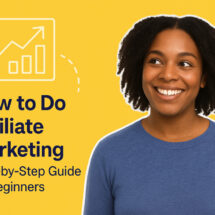What Is a Good Open Rate for Email? Benchmarks & How to Improve Yours
By Sean Tinney May 18, 2025
Imagine spending hours crafting the perfect email campaign, only to find out later that hardly anyone even opened it. If you’ve ever clicked “send” and then obsessively refreshed your analytics dashboard, waiting for open rates to come in, you’re not alone. Tracking email open rates is essential to know if your messages are reaching your audience—or getting lost in crowded inboxes.
So, what is a good open rate for email? In most cases, a good open rate for email falls between 17% and 28%, with variations depending on your industry, list quality, and campaign type. According to recent data, the average open rate across industries is 21.5%. As a general rule, if your open rates are above 20%, you’re on par with many successful marketers.
What Is a Good Open Rate for Email Marketing?
The definition of a “good open rate” depends on several factors, including the type of emails you send and your audience. For regular email newsletters, a good open rate for email newsletters is around 17–28%. Transactional emails (like password resets) can have much higher open rates, sometimes exceeding 40%, while promotional campaigns might be a bit lower. The important thing is to compare your open rates to industry-specific benchmarks and your own historical data.
For example, open rates in niche industries like hobbies and arts can be as high as 27%, while technology or retail often average closer to 18%. The key is to focus on improving your own numbers rather than chasing arbitrary benchmarks.
How Open Rates Are Measured
Your open rate is calculated as the percentage of delivered emails that were opened. The formula is:
Open Rate = (Number of Emails Opened) / (Number of Delivered Emails) × 100
If you send a campaign to 1,000 people and 220 open it, your open rate is 22%. Simple! But there are caveats. Open rates depend on a tracking pixel loading when the recipient views the email, so some privacy settings (like Apple Mail Privacy Protection) can inflate or deflate the numbers. This means it’s best to track open rates as a trend, not an absolute metric.
Factors That Influence Good Open Rates
Understanding what is a good open rate for email marketing starts with knowing the variables at play. Here are the most common factors:
- Audience quality: An engaged, opt-in list naturally leads to higher open rates than a purchased or outdated list.
- Subject line relevance: Compelling, personalized subject lines grab attention and make your emails stand out.
- Sender reputation: Using a trusted sender name and email address builds credibility and trust.
- Send frequency and timing: Sending too often can lead to fatigue, while infrequent emails may be forgotten. Testing different days and times (such as Tuesday mornings for newsletters) can also boost opens.
- Mobile optimization: Most emails are now opened on phones. If your emails aren’t mobile-friendly, subscribers might delete them without opening.
For example, one AWeber customer saw an 8% jump in open rates after reworking their subject lines and segmenting their newsletter audience by interest. This shows how strategic adjustments can impact your results.
What Is a Good Open Rate for an Email Campaign vs. Newsletters?
The type of email matters. Wondering what is a good open rate for an email campaign, like product launches or flash sales? Promotional campaigns often see open rates in the 15–20% range, since not every subscriber finds these relevant. In contrast, recurring newsletters with targeted content usually achieve better results, typically 20–28% or higher, especially if they deliver consistent value.
If you notice your open rate for email marketing campaigns is well below these ranges, it’s time to investigate your list hygiene or email content. Compare your rates by email type to get clues about where improvements could make the biggest impact.
How to Improve Your Email Open Rates: Actionable Strategies
1. Write More Compelling Subject Lines
Your subject line is the first—and sometimes only—thing readers see. Experiment with personalization (using the reader’s name or interests), curiosity, and clear benefit statements. For example, “Get 20% Off Fresh Spring Gear” is more enticing than “Monthly Newsletter.”
How to do it: Run A/B tests on at least 2–3 subject lines per send using your email platform to see what resonates most.
Why it works: AWeber found that changing subject lines led to a 7% average increase in open rates across tested campaigns (writing better email subject lines).
When to apply: Test before major promotions or newsletter issues for best results.
2. Clean Your Email List Regularly
Inactive subscribers drag down your open rates. Regularly removing (or re-engaging) those who haven’t opened emails in months keeps your list clean and healthy. A smaller but actively engaged list is better for your sender reputation.
How to do it: Use your email platform’s segmentation tools to identify non-openers over a set period (like 90 days). Send a re-engagement campaign, then remove those who remain inactive.
Why it works: List cleaning results in more accurate open rates and improved deliverability.
When to apply: Quarterly, or before major marketing pushes.
3. Segment Your Subscribers
Segmenting means dividing your audience based on interests, behavior, or demographics. Sending tailored content to smaller groups often leads to higher engagement.
How to do it: Create groups based on recent purchases, topics of interest, or sign-up sources. Send customized email campaigns to each segment.
Why it works: Segmentation boosts relevancy. For instance, a gardening store might have separate segments for houseplants and outdoor gardening enthusiasts, leading to more meaningful content and higher open rates.
When to apply: Prioritize segmentation when launching new products or running regular email newsletters.
What If Your Open Rate Is Lower Than Average?
If your open rates fall below what is considered a good open rate for email, don’t panic—but do act. Start by looking at:
- List hygiene: Are you sending to people who want your emails?
- Subject lines: Can you test new angles?
- Sender details: Is your sender name familiar and trustworthy?
- Content: Are previous emails consistently valuable?
Review deliverability basics (articles to mprove email deliverability) and consider surveying your audience for feedback about email frequency or topics.
Comparing Open Rates Across Industries & Over Time
Not all industries are created equal when it comes to email marketing performance. The latest benchmarks show education (28%) and non-profits (25%) lead the pack, while retail and tech are closer to 17–19%. Compare your open rates to your own past sends more than national averages—progress matters most.
It’s also crucial to monitor trends over time. A steady decline could signal audience fatigue or deliverability issues. On the flip side, incremental improvements mean your tweaks are working.
Key Takeaways: Setting Goals and Taking Action
To sum it up, a good open rate for email marketing typically lands between 17% and 28%, depending on your industry and your audience. Don’t stress if you aren’t at the top end—consistent improvements matter more than keeping up with averages.
Focus on writing irresistible subject lines, keeping your list clean, and segmenting your audience for better targeting. Experiment, measure, and use your analytics to fuel your strategy. When you get more eyes on your emails, your hard work really starts to pay off.
If you’re ready to dive deeper, check out the AWeber Blog for more expert insights on improving your emails.


Leave a Comment